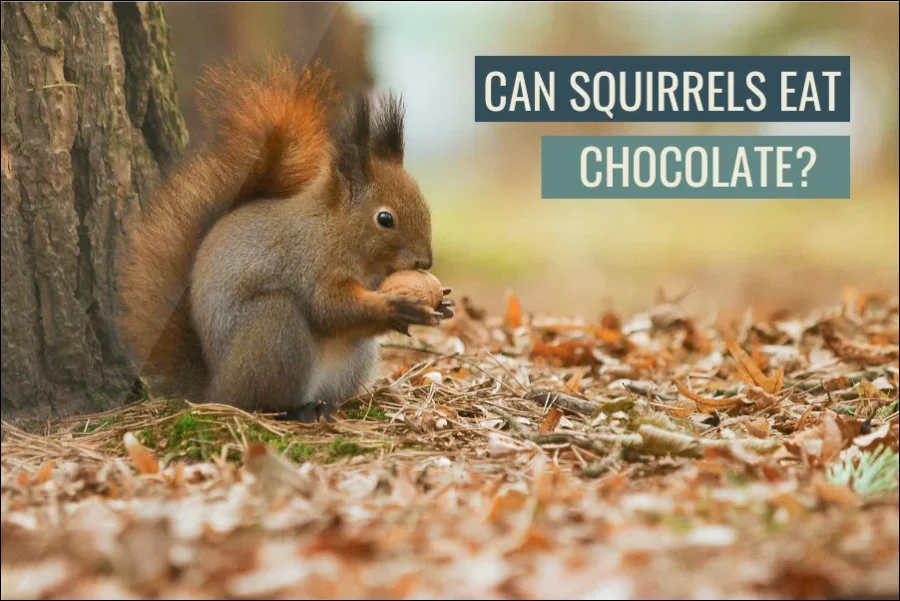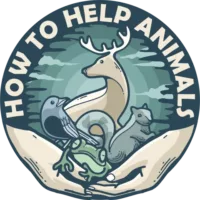
The afternoon sun filters through your kitchen window as you unwrap a chocolate bar, and you notice a curious squirrel perched outside, seemingly interested in your snack. Those bright eyes and twitching tail might make you consider sharing, but this is one treat that could prove deadly.
Chocolate is toxic to squirrels and should never be given to them under any circumstances. Chocolate contains theobromine and caffeine, compounds that squirrels cannot metabolize properly, leading to poisoning that can cause seizures, heart problems, and death.
Why Chocolate Is Deadly for Squirrels
Theobromine, the primary toxic compound in chocolate, affects squirrels’ nervous and cardiovascular systems in dangerous ways. Unlike humans, squirrels lack the enzymes necessary to break down this compound efficiently, allowing it to accumulate to toxic levels in their bloodstream.
Even small amounts of chocolate can trigger serious health problems in squirrels due to their small body weight. A piece of chocolate that seems insignificant to humans represents a massive dose relative to a squirrel’s size, making poisoning likely even from minimal exposure.
Dark chocolate and baking chocolate contain the highest concentrations of theobromine, making them the most dangerous varieties. However, all types of chocolate pose risks, including milk chocolate and white chocolate, which contain lower but still harmful levels of toxic compounds.
Immediate Symptoms of Chocolate Poisoning
The first signs of chocolate toxicity typically appear within 2-4 hours of consumption. Affected squirrels may exhibit hyperactivity or restlessness, appearing unusually agitated compared to their normal behavior patterns.
Digestive symptoms often follow, including vomiting, diarrhea, and excessive drooling. These early warning signs indicate that the squirrel’s body is attempting to eliminate the toxic substances but may not be successful without intervention.
Neurological symptoms represent the most serious stage of chocolate poisoning. Tremors, seizures, and difficulty with coordination signal that the toxins have reached dangerous levels in the squirrel’s system and require immediate emergency care.
How Much Chocolate Is Dangerous?
For squirrels, there is no safe amount of chocolate consumption. Their small size means that even tiny quantities can reach toxic concentrations quickly. A single chocolate chip could potentially cause serious health problems in a young or small squirrel.
The concentration of theobromine varies significantly between chocolate types, but all varieties pose risks. Baking chocolate contains approximately 450mg of theobromine per ounce, while milk chocolate contains about 64mg per ounce – both dangerous for squirrels.
Body weight plays a crucial role in toxicity levels. Adult squirrels typically weigh 1-2 pounds, while young squirrels may weigh only a few ounces, making them extremely vulnerable to even trace amounts of chocolate exposure.
Emergency Response to Chocolate Consumption
If you suspect a squirrel has consumed chocolate, contact a wildlife veterinarian or rehabilitation center immediately. Time is critical in chocolate poisoning cases, and professional intervention significantly improves survival chances.
Do not attempt to induce vomiting unless specifically instructed by a veterinary professional, as this can sometimes worsen the situation or cause additional complications in wildlife species.
Provide fresh water if possible, but avoid forcing the squirrel to drink. Keep the animal in a quiet, safe environment while awaiting professional help, as stress can exacerbate the toxic effects.
Safe Alternative Treats That Won’t Harm Squirrels
Instead of chocolate, offer squirrels treats that align with their natural dietary needs. Fresh grapes provide natural sweetness and important nutrients without toxic risks, making them a much safer option for wildlife feeding.
Unlike harmful foods like bread, appropriate treats support squirrel health rather than compromising it. Unsalted nuts, seeds, and fresh fruits provide the nutrition squirrels need while satisfying human desires to interact positively with wildlife.
Natural foods encourage proper foraging behaviors and don’t create the health risks associated with human confections. These alternatives benefit squirrels while maintaining their natural dietary patterns.
Other Toxic Foods Squirrels Should Avoid
Chocolate isn’t the only human food that poses serious risks to squirrels. Caffeine from coffee, tea, and energy drinks creates similar toxic effects due to compounds related to theobromine.
Artificial sweeteners, particularly xylitol, can cause rapid blood sugar drops and liver damage in wildlife. Many sugar-free gums, candies, and diet products contain these dangerous compounds.
Salty snacks like chips and pretzels can cause dehydration and kidney problems in squirrels, whose systems aren’t designed to process high sodium levels found in processed human foods.
Understanding Squirrel Metabolism Differences
Squirrels metabolize substances differently than humans due to their size, physiology, and evolutionary adaptations. Their rapid metabolisms mean that toxic compounds can reach dangerous concentrations quickly, but also that they may eliminate some toxins faster than larger animals.
However, this rapid metabolism works against them with chocolate poisoning, as theobromine interferes with normal cellular processes throughout their systems. The compound affects heart rhythm, nervous system function, and kidney operation simultaneously.
Their natural diet consists entirely of plant-based materials that their digestive systems have evolved to process efficiently. Introducing foreign compounds like those found in chocolate overwhelms their natural detoxification abilities.
Preventing Accidental Chocolate Exposure
Secure storage of chocolate products protects both wildlife and pets from accidental consumption. Keep all chocolate items in closed containers or cabinets that curious squirrels cannot access if they enter homes or garages.
Outdoor eating areas should be cleaned thoroughly after consuming chocolate products, as even small crumbs can pose risks to wildlife. This is particularly important during picnics or outdoor gatherings where food debris might be left behind.
Educate family members and visitors about the dangers of feeding chocolate to wildlife. Well-meaning individuals often don’t realize the serious health risks associated with sharing human treats with wild animals.
Community Education and Wildlife Protection
Spreading awareness about chocolate toxicity helps protect entire neighborhood squirrel populations. Many people genuinely want to help wildlife but lack knowledge about which foods are safe versus dangerous.
Social media and community groups provide platforms for sharing important wildlife safety information. Educational posts about toxic foods can prevent countless cases of accidental poisoning throughout local communities.
Schools and youth organizations benefit from wildlife education programs that teach children about appropriate ways to interact with local animals. Early education creates lifelong conservation awareness and prevents harmful feeding practices.
Supporting Squirrel Health Through Proper Care
Long-term squirrel welfare depends on understanding their natural needs rather than anthropomorphizing their dietary preferences. What appeals to human taste buds often conflicts directly with wildlife nutritional requirements.
Creating squirrel-friendly environments through native plantings and natural food sources provides sustainable support without the risks associated with human food sharing. This approach benefits wildlife while satisfying human desires to help local animals.
Understanding natural squirrel behaviors helps people appreciate these animals without potentially harmful interventions. Observing their natural foraging and social behaviors provides rewarding wildlife experiences without compromising their health and safety.
